Alex Tyler explains what to expect when you order your own gear
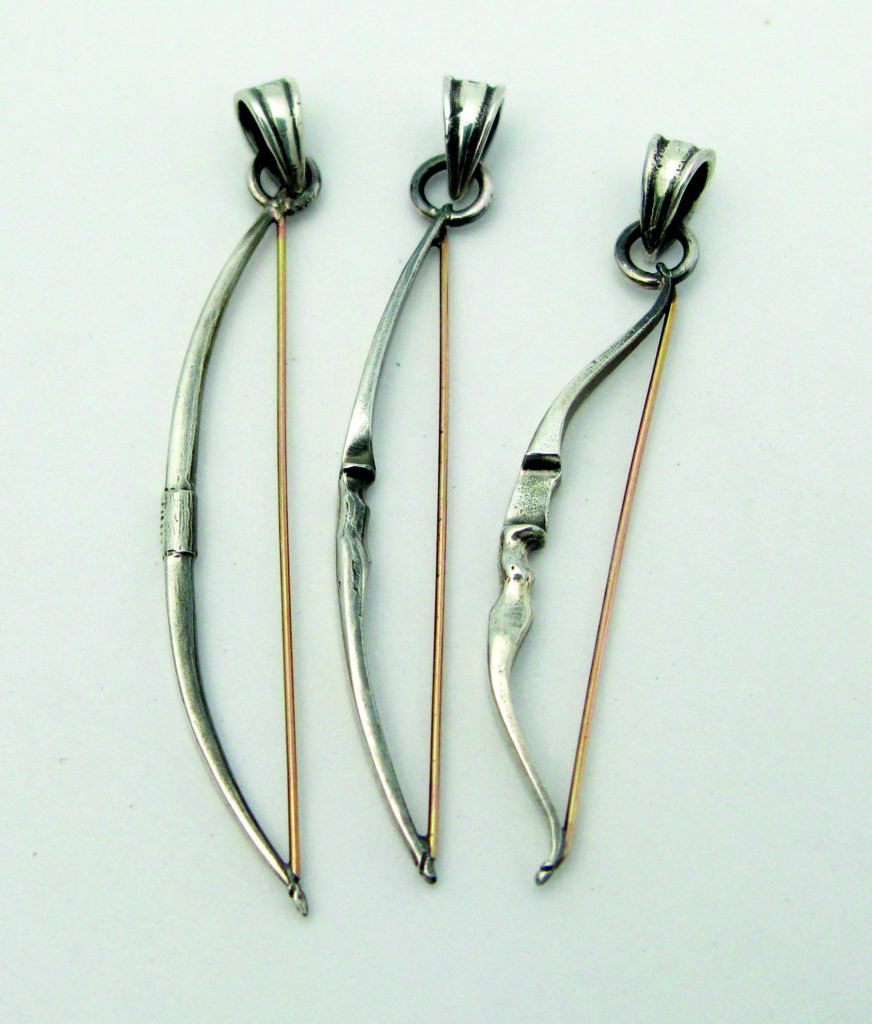
Once you have your bow and arrows, kit for field archery can be strictly functional. When you are spending days in the woods, your equipment must be able to hold a day’s worth of arrows, all the necessary equipment to deal with potential technical mishaps and be able to stand up to brambles, mud and rain.
However, if you are looking to stand out a little more, there is a lot of potential for making your gear a bit more interesting through hand-crafted products.
Few items illustrate the possibilities for going beyond practicality better than my arrow rake. For my first years of field archery, I scraped the ground for stray arrows using a straightened long-handled paint roller originally designed for reaching behind radiators. It was hard wearing and did a good job of cutting through woodland detritus.
Then, I saw a crafted rake and fell in love. The handle was made of spalded ash and created by turning, the process of carving wood rotated by a lathe.
The traditional method is to shape items using hand tools, removing thin layers of wood while the wood spins, creating a symmetrical form like the one which now sits beautifully in my hand and poses proudly in my quiver. While a new rake hasn’t stopped me losing arrows, it has made the experience of hunting for them that little bit more stylish.
Another use for these beautiful handles is to create tassels for arrow-cleaning, that is if you can bear to get them dirty. Mike Cullen makes wooden handles, and seasons logs and for up to three years before they are ready for working.
He describes all woods as having their own character, with contrasts in the patterns and grains between locally felled trees like walnut and fruit against more exotic imported hardwoods like zebrano and purpleheart.
One popular area for craft is the recreation of historical designs. If you shoot a traditional bow, there will be accessories which either hark back to the original period of use or will create a particular look.
The quiver, in particular, can be crafted using a variety of techniques. For a medieval longbow archer, your quiver would typically be a bag made of linen, a hard-wearing, natural fabric.
If you are looking to try your hand at making your own, starting from scratch is probably out of the question as it means growing flax plants. An easier route is to buy the cloth and a holed leather spacer to sit at the neck of the quiver and keep the arrows separated, then follow a how-to guide from YouTube.
The most common material for crafted quivers is leather, with the type of leather varying depending on the position you wear the quiver. Stiffer leather such as bridle leather is typically used for back quivers, maintaining its shape, allowing easy drawing of the arrows.
For a hip quiver, softer leather allows the quiver to sit more easily against the body. Within the basic requirement to hold arrows, feats of imagination are possible, including this dragon example, Twang Ping, made by Phil Marr.
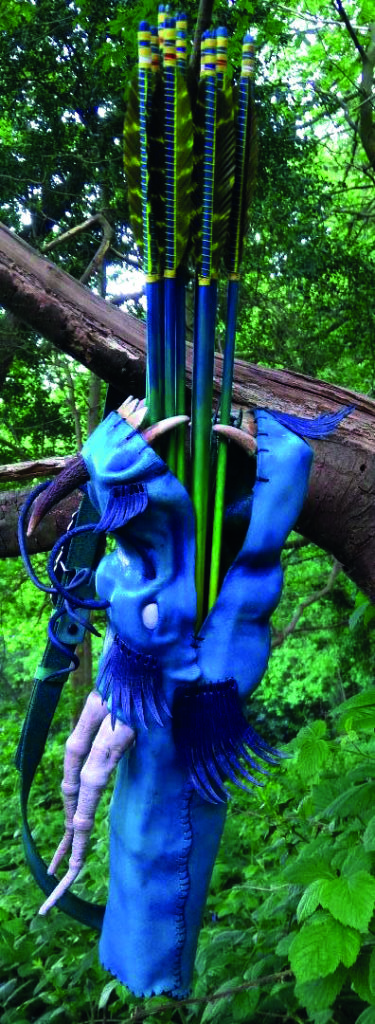
Using a mix of materials and techniques to create the effects he wanted, the finished quiver was moulded using wood and is inset with pieces of horn to finish the look. Phil also creates archery jewellery, making tiny models of bows into earrings and pendants.
Leather has multiple uses for accessories such as bracers, sheaths and hand guards, when shooting a bow without an arrow shelf. For leather to be capable of being worked by hand, a vegetable tanning process using natural materials is preferable, rather than chemical methods used for hides intended for clothing.
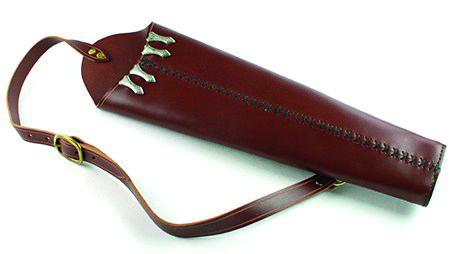
Through a vegetable-based process, the leather can flex and breathe and can take dyes. Craftsmen like Frank Damsell of Dixie Leathercraft use a range of carvers, punches and bevelling tools to create patterns and textures on his leather braces, quivers and pouches.
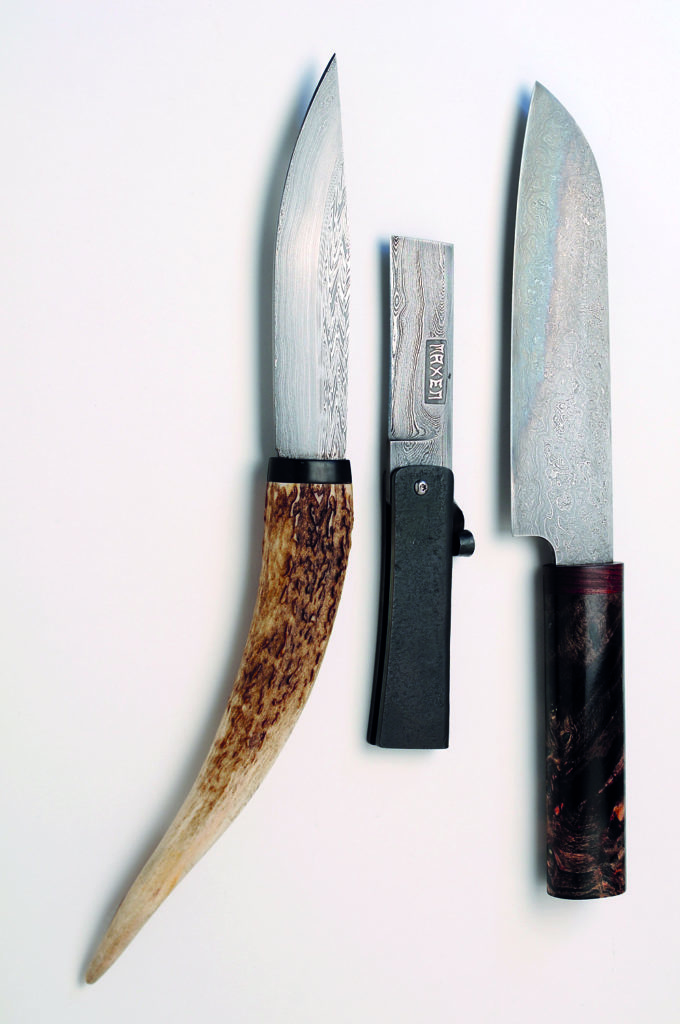
A knife for a field archer is not a tool used with pleasure as it generally means an arrow has missed a target and is now stuck in a tree. Aside from the blade being suitable for cutting wood in tight places, there is scope for creativity. Mick Maxen creates knife blades with a Damascus finish [left], a tradition and labour-intensive technique from around the time of the Romans.
This was the way most Anglo-Saxon and Viking sword and knife blades were made, starting with multiple pieces of metal which are are heated and hammered together with the process repeated a number of times, depending on the finish required. The technique creates a strong blade with distinctive swirls in the metal much like the grain in wood.
Rather than using regular tin medals, where members have craft skills and imagination a club’s way of rewarding archers placing at competitive shoots can become much more interesting.
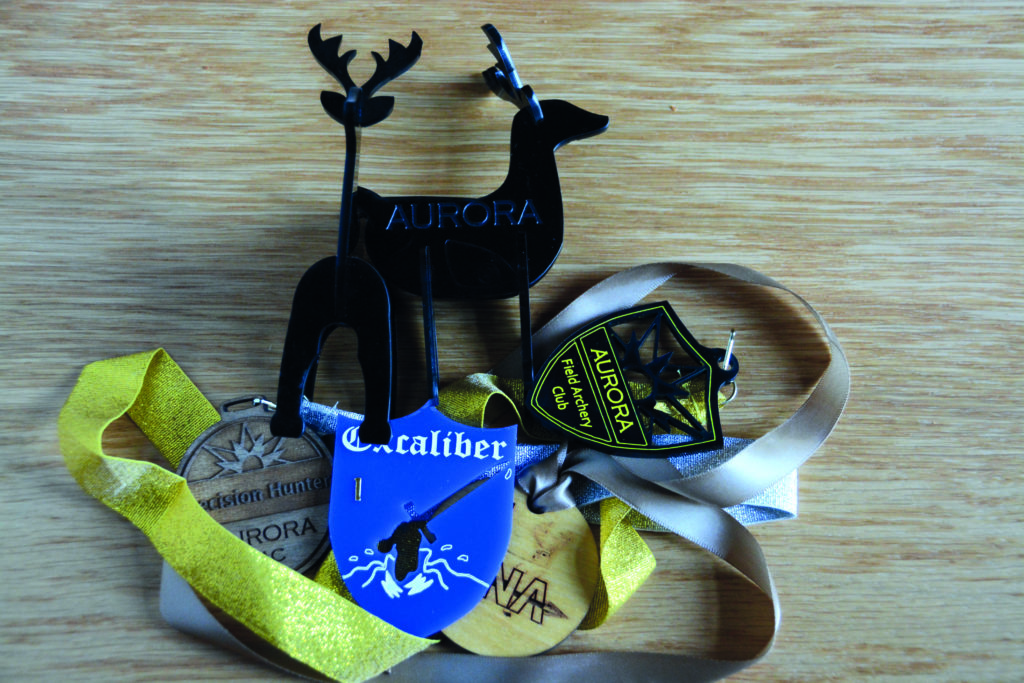
Showing how new technology can give a twist to craft skills, Madi Tricker has designed and created distinctive medals for clubs from resin [above] cut out with a laser.
While some follow the conventional medal shape, she has branched out by creating stags where the umber of antler prongs represent places achieved.
And finally, a craft which makes a huge contribution to the fun of field archery is cake baking. Possibly the most impressive archery cake I know is the life-size bobcat target cake baked by Shirley Donald and raffled at the 2019 NFAS 3D Championships, raising over £3,000 for Cancer Research UK.
An option if you have a particular idea in mind, is to commission a piece directly from a craftsman. Make sure you are clear about areas that are requirements and where you can be open to ideas. Be sure to come to an agreement about the price and the time to deliver at the beginning of the process, to make sure there are no nasty surprises.
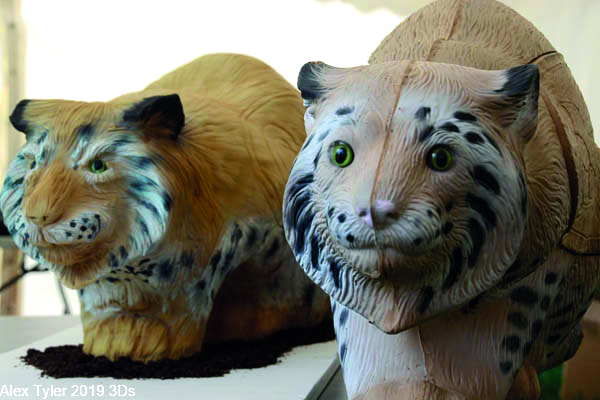
Given that the craftsman may need to purchase specific materials, be prepared to give a deposit and potentially to pay in instalments. It will be worth it for when your item arrives and your kit can make the statement you want and promoting some unique skills.
Some archery artisans to explore
Mike Cullen, wood-handled arrow rakes and tassels
[email protected]
Dixie Leathercraft
www.facebook.com/dixiedamsell
Mick Maxen, blacksmith
[email protected] or via Facebook
Phil Marr, archery jewellery
https://www.etsy.com/uk/people/archersjewellery
Shirley Donald, bespoke cakes
http://totalcakes.co.uk/portfolio
Madi Tricker, plastic items
www.facebook.com/ParalianLaser

